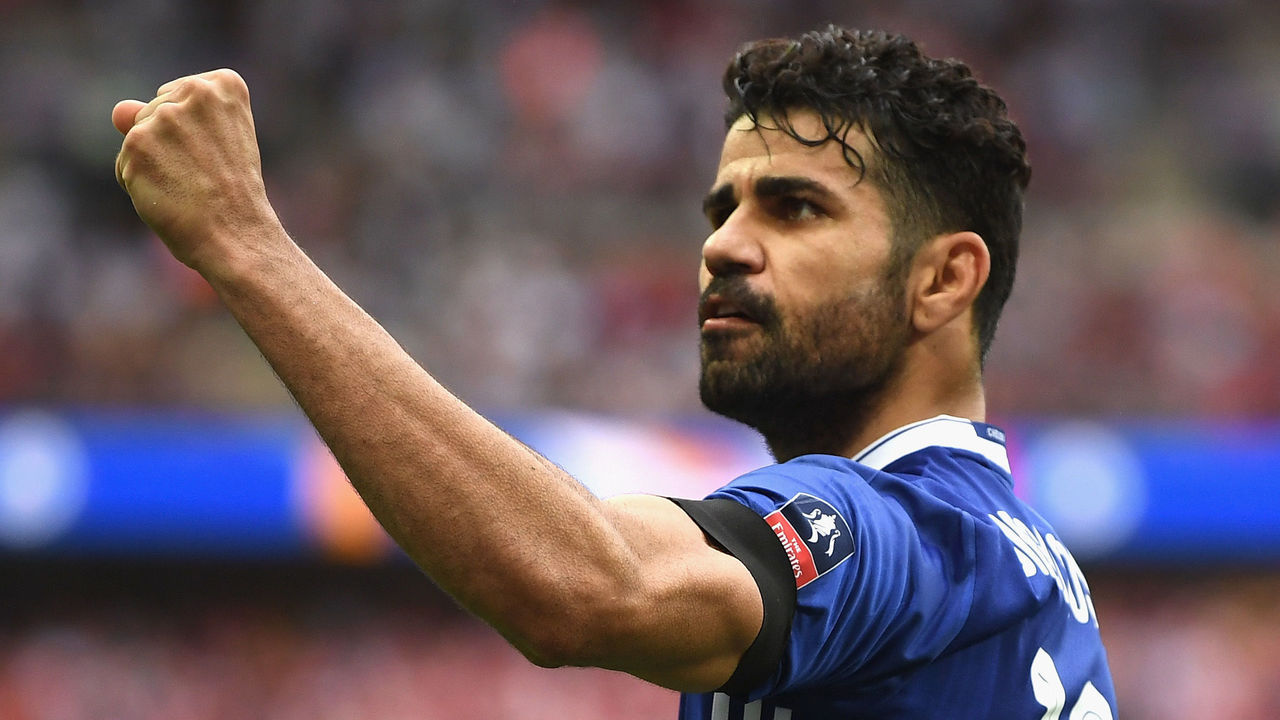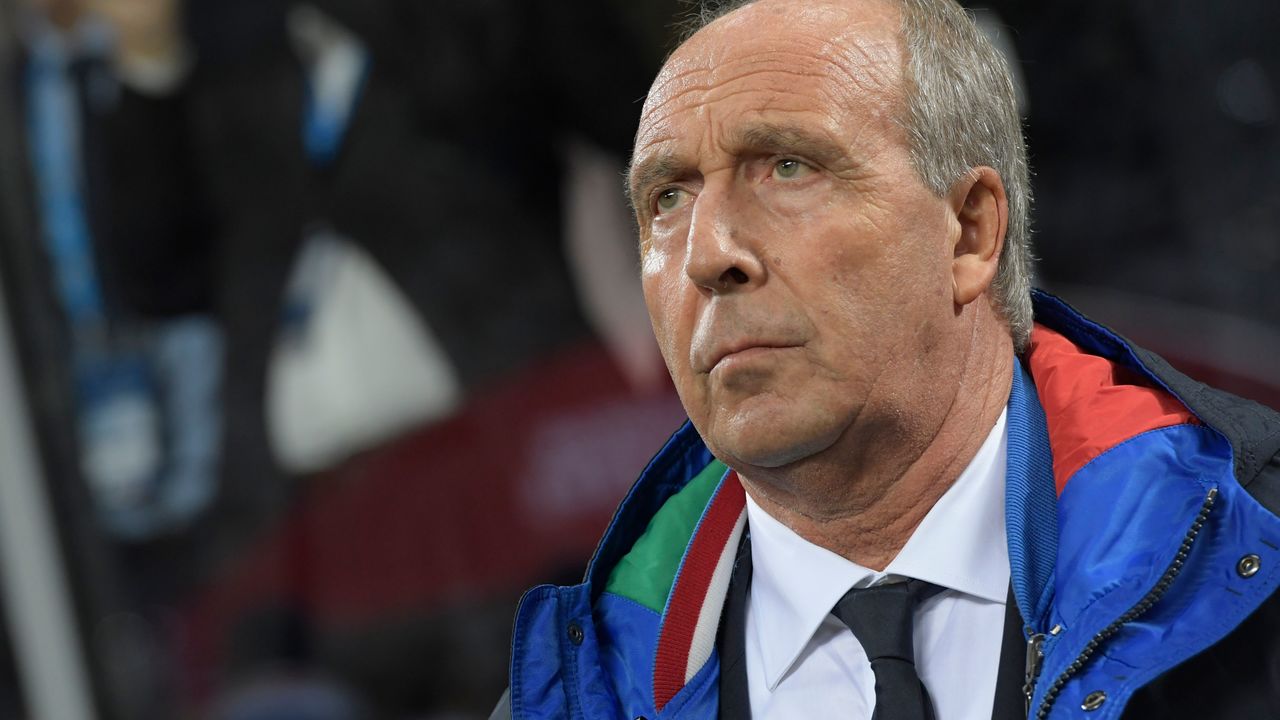The Diego Costa file: Biggest villains of 2017
Football needs Diego Costa. It needs people who break the Laws of the Game, who offend supporters, who do wrong on and off the pitch, who play with a little devil sitting on one of their shoulders. They are essential to the narrative of the sport.
Without villains, football would be a happy-go-lucky sport where everyone gets along with everyone. Where's the fun in that?
Here are football's biggest villains of 2017, beginning with the man himself:
Diego Costa

Costa entered 2017 as the protagonist of a club that was six points clear at the top of the Premier League. As the Guardian's Sachin Nakrani wrote on the first day of the year, the forward's body language while walking alongside Antonio Conte included "smiles, a warm embrace, mutual bonhomie." He looked happy. He looked like he had turned a corner.
Less than two weeks later, Costa was back to his villainous ways, as the striker was dropped by Chelsea after a row over a huge offer from a club in China. He reportedly clashed with one of the Blues' fitness coaches and didn't travel with his teammates to Leicester City. Conte insisted back pain was to blame for the absence, but the footballer was apparently told he wouldn't return unless his attitude improved.
Costa returned to training, and harmony appeared restored as Chelsea cruised to the Premier League title. But it didn't last. In June, he claimed he'd been told by Conte that he wasn't wanted at Stamford Bridge. In August, he accused the Blues of treating him like a "criminal." By the time September rolled around and an agreement was reached between Atletico Madrid and the English club for his transfer, he was once again known as a malefactor.
Neymar

Neymar's €222-million transfer to Paris Saint-Germain had more to do with the Brazilian phenom's search for glory than money, but that's not how supporters across the planet interpreted the move.
When Neymar joined PSG from Barcelona in August, the transfer attracted no shortage of cynicism about the values of modern football. For many, a line had been crossed. Even those who welcomed exorbitant transfer fees admitted that €222 million was too much for a single footballer. It wasn't hard to understand why the product of Santos Futebol Clube was labelled as a gold digger, either. Les Parisiens allegedly offered him wages of around €30 million per year.
The transfer's value, Neymar's celebrity lifestyle, and Barcelona's international fan base made him a public enemy, an easy target for supporters who believe that football is contaminated. He joined PSG with the Ballon d'Or in mind, but, until he gets his hands on the award, he will be a symbol of what's wrong with the sport.
Gian Piero Ventura

When Italy missed out on the World Cup for the first time since 1958, it took no time for Gian Piero Ventura to become the scapegoat for the country's failure. The Italian manager did himself no favours. He overlooked Lorenzo Insigne at a time when the Azzurri desperately needed attackers, was extraordinarily rigid and refused to abandon a 3-5-2 formation, destroyed the connection between defence and attack by having no coherent plan, and failed to bring through the next generation of talent.
Worst of all, Ventura didn't resign when Italy failed to qualify for the 2018 World Cup, instead holding on to the job until he was sacked.
Ventura's incompetence wasn't solely to blame. Carlo Tavecchio, who resigned as president of the Federazione Italiana Giuoco Calcio, was also responsible. But a series of mind-boggling decisions by the tactician made him the obvious fall guy, and left him disgraced in the world of Italian football.
Anthony Precourt

It doesn't get much more villainous than relocating a founding club, and that's what Anthony Precourt, the chief executive officer of Precourt Sports Ventures and chairman of Columbus Crew SC, is considering.
The Crew's supporters were blindsided when the club announced that Precourt Sports Ventures is "exploring strategic options to ensure" its long-term viability, including potential relocation to Austin, Texas. Appalled by the announcement, the Nordecke, leaders of the supporters groups in Columbus, called on a rally, beginning a classic struggle between a money-driven owner and fans who felt betrayed.
There can be no denying who the good and bad guys are. MAPFRE Stadium was the first soccer-specific stadium in Major League Soccer, and any relocation would set a dangerous precedent. Austin wasn't even among the 12 cities where expansion bids were formally submitted. Unfortunately, it feels like the relocation was finished before supporters even had a chance to protest.
(Photos courtesy: Getty Images)
HEADLINES
- La Liga chief plans league matches in U.S. from 2025-26 season
- Report: Xavi will remain at Barca after reversing decision to leave in June
- Judge freezes bank account of Pique's company amid Supercopa probe
- Barca chief wants Clasico replayed if 'ghost goal' call is proven wrong
- Report: Barca's De Jong to miss rest of season with ankle sprain